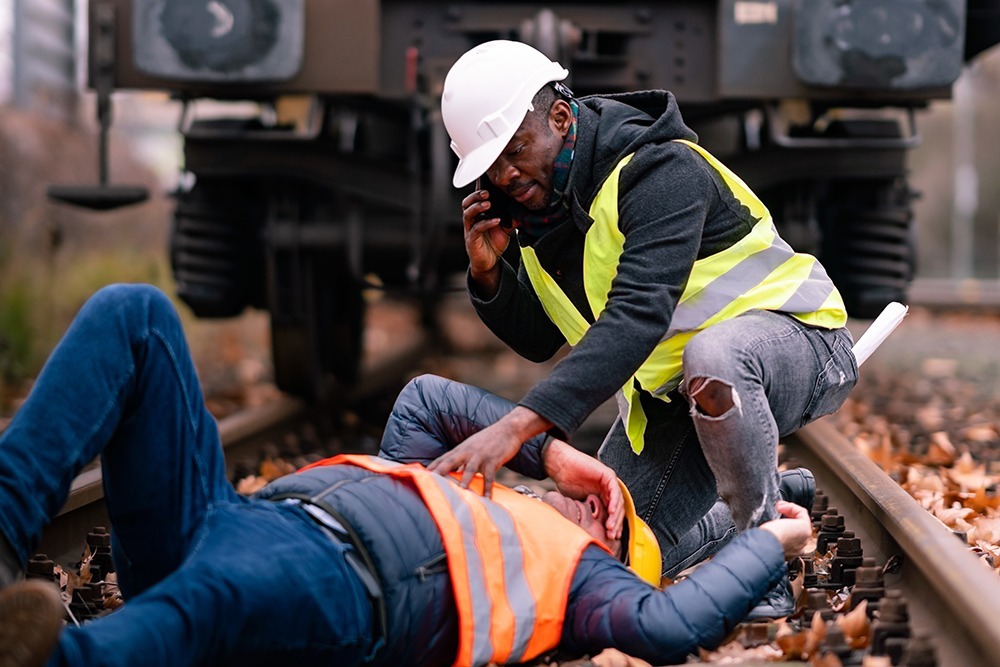Don’t Let These Common Hazards Lead to Serious Injury—Learn How to Stay Safe
Share:
Have you ever stepped onto a wet floor, tripped over an uneven surface, or struggled to see clearly because of poor lighting? If you’ve had a slip and fall accident—or if you’re worried about one happening—you’re not alone. Slip and fall injuries are among the most common accidents, and they can result in serious consequences, from broken bones to head injuries. The worst part? Many of these accidents are completely preventable, and they often happen when you least expect them.
If you’ve been injured in a slip and fall accident, you already know how quickly things can go from normal to painful. But if you’re concerned about staying safe in the future, knowing where the most common slip and fall hazards are—and how to spot them—can make all the difference.
Wet or Slippery Floors: The Hidden Danger Beneath Your Feet
You’re walking through a store, restaurant, or office building, and suddenly your feet slip out from under you. It might be due to a spill that no one cleaned up or the water brought inside from the rain. Wet floors and slippery surfaces are one of the most frequent causes of slip and fall accidents. When these surfaces are poorly marked, you might not realize the danger until it’s too late.
Prevention Tips:
Look for warning signs: When visiting public places, be on the lookout for “Wet Floor” signs. If there aren’t any and you spot a spill, try to avoid it. Don’t hesitate to alert someone to clean it up.
Walk cautiously: Slow down, especially in areas where spills are more likely to happen, like entryways, kitchens, or bathrooms. Take smaller steps and keep your balance.
Trust your instincts: If something feels slippery, it probably is. Avoid walking across that area if possible.
Uneven or Damaged Surfaces: What’s Lurking Beneath Your Feet?
Cracks in the sidewalk, raised tiles in a store, or loose floorboards at your friend’s house—they’re more than just minor annoyances. These seemingly small hazards can quickly lead to a dangerous slip, trip, or fall. Uneven surfaces are a common cause of injuries, especially if you’re not expecting them.
Prevention Tips:
Scan your path: When entering a business or home, look around for any potential trip hazards—like cracks, raised mats, or loose carpets. If the ground feels uneven, move cautiously and take note of the problem.
Ask for assistance: If you’re in a store and notice a tripping hazard, it’s okay to ask the staff to help or report the issue. Property owners have a responsibility to fix these problems.
Stay aware at night: Low lighting can make it harder to spot these hazards, so be extra careful when walking in dimly lit areas.
Poor Lighting: Seeing is Believing (and Staying Safe)
How often have you found yourself stumbling around in poorly lit parking lots, hallways, or staircases? Whether indoors or outside, bad lighting can make it difficult to spot obstacles or uneven ground. When you can’t see what’s in front of you, the chance of tripping or falling increases.
Prevention Tips:
Look for well-lit paths: As you enter a building or outdoor area, check if the lighting is adequate. If you feel unsure about your surroundings, use your phone’s flashlight or ask for assistance.
Avoid shortcuts in dim areas: If you’re walking outside at night, don’t take shortcuts through poorly lit areas, such as dark parking lots or alleys. Stick to well-lit paths to minimize the risk of tripping over hidden obstacles.
Speak up if you notice dark spots: If you’re in a public place and notice a poorly lit area, let the staff know. It’s in their best interest to ensure that their property is safe for customers.
Cluttered Walkways and Obstacles: Clean Paths = Safe Steps
Sometimes the biggest danger isn’t the ground beneath your feet—it’s what’s on it. When walkways are cluttered with bags, boxes, or discarded items, you’re more likely to trip and fall. From department stores to family gatherings, cluttered walkways are a serious slip and fall risk.
Prevention Tips:
Stay alert and avoid distractions: Keep an eye on the floor ahead of you, especially in places like grocery stores, malls, or even someone’s home where there may be objects scattered across the floor. If you see something, walk around it carefully.
Avoid tight spaces: When walking in areas with a lot of traffic, like aisles or hallways, try to give yourself extra space. This can help you avoid bumping into something and tripping.
Keep an eye on the ground: If you’re heading into a new area, make sure the path is clear. Move around obstacles and be especially careful around areas where people might leave things behind, like near the entrance or in crowded areas.
Inadequate Footwear: Your Shoes Could Be Your Worst Enemy
Sometimes, the biggest risk to your safety isn’t the environment—it’s your own shoes. High heels, flip-flops, or shoes with slippery soles can make you more prone to falling, especially in places where the ground may be wet or uneven.
Prevention Tips:
Choose your shoes wisely: If you’re going somewhere with the potential for slip hazards, choose shoes with non-slip soles and enough support to keep your balance. In high-risk areas like restaurants or outdoor events, avoid shoes that lack traction.
Consider the environment: Before you leave home, think about where you’re going and what the conditions will be like. If you’re heading to a store or office building, comfortable, supportive shoes are always a safer option.
Don’t forget the weather: If you’re heading outdoors in wet or icy conditions, wear shoes designed for those conditions. Boots with traction can help prevent slips when walking on snow or ice.
Weather Conditions: Slippery Surfaces Aren’t Just for Winter
While icy roads and snowy sidewalks are obvious dangers, wet weather can create hazards all year round. Rain, humidity, and even wet leaves can make surfaces slippery and increase the chances of a fall.
Prevention Tips:
Take it slow when it’s wet outside: When walking in rainy or damp conditions, reduce your speed. Pay special attention to entryways and steps where water may accumulate.
Stay away from puddles: If you see a puddle, don’t take the chance of walking through it. Water can make the ground slick and increase your risk of slipping.
Wear the right footwear: Waterproof shoes with good traction can help keep you steady during rainy days. Avoid sandals or shoes with smooth soles during wet conditions.
Take Action to Protect Yourself
Whether you’ve been injured in a slip and fall accident or simply want to stay safe while out and about, being proactive is key. The more aware you are of potential hazards, the better prepared you’ll be to avoid them.
If you or a loved one has already been injured due to a slip and fall on someone else’s property, you deserve justice and compensation for your injuries. At DuFault Law, we specialize in helping victims of personal injury accidents, and we’ll fight to get you the compensation you deserve for medical bills, lost wages, and pain and suffering.
Need Help After a Slip and Fall Accident? Contact DuFault Law Today!
If you or a loved one has been injured in a slip and fall accident, you don’t have to navigate the legal process alone. At DuFault Law, we specialize in personal injury law and are committed to helping you get the compensation you deserve. Don’t wait—reach out for a free consultation today.
Call us at (239) 422-6400 or email contact@dufaultlaw.com. Let us fight for your rights and help you get back on your feet.



Comments are closed